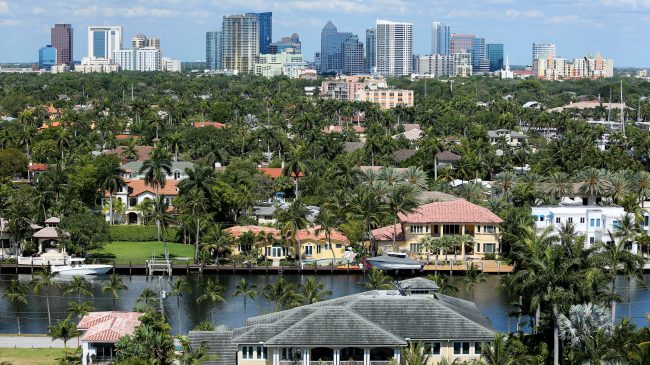The state of Florida has spent $3.6 billion of taxpayers’ money in a 16-year gamble to urge businesses to relocate to or expand in the state. But has it worked?
In a new study, I employ a simple scientific model filled with county-level job creation data and business tax incentive data to explore the relationship between tax incentives and job creation to answer that very question. The study finds no correlation between tax incentives and job creation, suggesting the program, and perhaps others like it, have serious flaws in their ability to create jobs.
These tax incentives include cash grants and rebates on taxes that go directly to firms in exchange for placing newly created jobs in a given territory. A contemporary example is the recent courting of the AmazonHQ2 headquarters—whereby policymakers around the country are convinced the economic impact will be “almost impossible to fathom,” as Maryland Gov. Larry Hogan put it. Despite the inability to measure what is “almost impossible to fathom,” policymakers consider business incentives creating jobs.
Proponents of economic development incentives claim state and local governments that bid the highest with incentives will get the most growing firms, which will produce the most jobs, which will generate economic impact for the rest of the community in a chain reaction set off by the incentives.
Note that a key linkage in this chain of claims is that more incentives equal more jobs. The incentive investment, however high it has to be, is surely less than the economic impact the incentive will “create” by attracting jobs.
I test that assumption using job creation data from 1999–2015, comparing a group of four Florida counties that collectively spent over $2.2 billion on economic development tax credits, including several “mega-deals” similar to the ongoing Amazon HQ2 offers, to a control group of counties that spent just $200 million but were similar in other important economic ways.
The logic of this model is that, by comparing two groups of counties that are similar in many ways except for their incentive spending, we should expect the counties with more incentive spending to have more jobs. The findings show that, despite spending more than their counterparts on job creation tax credits, the incentive-heavy counties realized no appreciable long-term gains in either gross or net job creation.
But how can this be? Shouldn’t that amount of money that went directly into creating jobs bear some kind of unique gains?
The hidden issue is that investing in companies is highly volatile—some 96 percent of companies fail within 10 years, taking jobs and capital down with them like a sinking ship. Sure, some incentive investments could theoretically work out, meaning the firms were given incentives and created jobs. But are states and counties prepared to accept the notion that economic developers around the country know who the 4 percent of successful firms will be so they can be lured into their regions with incentives before they expand and create jobs? I think not, and the data do not support this proposition.
There is scant evidence, economic or survey, that incentives improve these odds, as exemplified in Florida. In other words, a strong majority of incentives fail because the firms they attract and are attached to never attain their promised performance; the incentive just piles on more unproductive capital in addition to the private capital that was invested in the firm.
Even the billions of dollars spent by four Florida counties did not net those areas more jobs than their counterparts. It is folly to suggest that policymakers in the counties with less incentives were somehow more effective, or “doing more with less.” A more likely scenario is that job creation in both sets of counties is tied both to larger macro factors as well as internal firm characteristics, and that job creation is not responsive to incentive spending.
The data show that firms are not going to create more jobs than the market would, merely to reap a tax incentive waiting at the end of the year or arriving at the beginning of the year. They are bound to market forces just like every other firm, and even billions of dollars of tax money cannot force them to create more jobs than they otherwise would. Indeed, surveys find that companies regard these tax incentives as only a small part of any decision to relocate or expand in a certain place.
Firm growth is highly volatile, unpredictable, and not well scientifically documented or understood. Yet, policymakers persist in creating a false financial reality with a marketplace where jobs can be bought and traded like some kind of asset with guaranteed returns. “Obviously, the returns are so high you should bid whatever is necessary to win that firm,” an economic developer might say. Not so fast.
The reality is that those “returns” on firm expansion are not almost impossible to fathom, they are actually impossible to fathom. Whether the incentive is $5 dollars or $50 billion, the firm will create what the market allows and no more. Betting on that expansion has a 96 percent chance of failure. The returns are far from guaranteed, yet the incentive programs are calculated and operated as if they were.
As a result, incentive programs fail because they do not account for the fact that the firms and the “returns” they are bidding on are highly volatile and prone to failure. Policymakers should not trust any single firm’s or economist’s growth projections enough to risk public money in order to just potentially win those benefits.
It could even be possible the holy grail of economic development this decade, Amazon HQ2, will not achieve its anticipated numbers. If Florida is any indication, it won’t.

